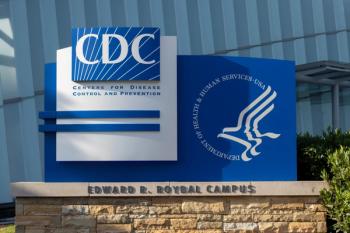
5 Ways Pharmacists Can Improve Medication Adherence
Since care quality measures are now more aligned with reimbursement, pharmacists are encouraged to focus more on medication adherence.
Since care quality measures are now more aligned with reimbursement, pharmacists are encouraged to focus more on medication adherence.
Here are 5 ways pharmacists can help patients become at least 80% or “fully” adherent, because as former US Surgeon General C. Everett Koop said, “Drugs don’t work in patients who don’t take them.”
1. Use Kitchen Table Consults
Pharmacists can help patients improve their adherence through medication therapy management (MTM) programs such as
For example, Christy Whitlock, RPh, founding partner of Winyah Home Rx, LLC, based in South Carolina, has partnered with local hospitals to identify and assist patients who needed extra help with their medications. Her program deploys medication coaches to patients’ homes, where pharmacists and pharmacy technicians examine all of the patients’ medications and start a conversation with the patients about the best methods to stay adherent.
The medication coaches also investigate co-pay assistance programs to help patients overcome financial obstacles that can affect adherence.
2. Improve Pharmacy Work Flow
Pharmacists balancing prescriptions, insurance issues, physician callbacks, and patient care services can find themselves in a chaotic workplace, but there are ways to create a more balanced and dynamic workflow.
Donald Grove, RPh, is a proponent of the
Grove also suggested having a pharmacy technician trained to handle the majority of prescriptions, with a second technician positioned as “the dedicated counter.” Production pharmacists should be tasked with prescription verifications, while clinical pharmacists should focus on patient care services, such as counseling and MTM.
“Consolidating pharmacist functions to focus solely on verification and counseling allows time for leaving the counter; it is impossible for pharmacists to do MTM cases or give immunizations if there is no time,” Grove wrote.
He also suggested that pharmacies respect their employees’ time. Pharmacy owners should try to allow pharmacists to schedule their work hours around 3-day weekends or take off every other Friday to tackle non-work responsibilities, Grove advised. This will allow for increased employee satisfaction and less turnover.
3. Simplify Patients’ Medications
The National Community Pharmacists Association (NCPA) offers its members a free program called Simplify My Meds to assist pharmacists in keeping their patients adherent.
The program helps pharmacists consolidate and coordinate patients’ medications so that patients can pick up all their medications on the same day each month.
“Some pharmacies have seen as much as a 30% increase in prescriptions and revenue from their synchronized patients, and patients love the convenience and personalized service this program provides,” NCPA states on its website.
Simplify My Meds includes an operations manual, training materials, and a starter kit of marketing materials.
4. Identify Reasons for Medication Nonadherence
Elizabeth Whalley Buono, BSN, RN, MBA, JD, has argued that there is
While automatic prescription refills may help some patients, they do not necessarily result in patients taking their medication correctly or at all. Some patients may stop medication early, go on drug holidays, or take their medication at different times each day.
Buono maintained that the key to success with adherence is using innovation to focus on the individual patient’s nonadherence problems. Ways to improve adherence may include involving the patient’s “health care ecosystem,” addressing the patient’s main reason for adherence such as forgetfulness, and providing feedback and counseling.
The adherence problem must also be tackled as a team—not only by the health care system, but also through patient social networks. The value of caregivers should not be overlooked, Buono stated.
“Patient medication nonadherence is unlikely to be adequately addressed by a single intervention or intervener,” she wrote. “This complicated problem must be addressed with multilayer, multifaceted, multisystem approaches designed in response to post engagement evaluation and collaboration.”
5. Ask Patients Specific Questions About Their Medication
“How do you remember to take your medications?” and “How would you know if you missed a dose?” are 2 questions pharmacists can ask patients to help determine their level of adherence, according to
Using study reports involving 6665 heart failure patients, University of Missouri researchers analyzed 29 different adherence approaches. From their findings, they suggested that health care providers should focus on patient behavior, rather than patient education about their medications.
Another question pharmacists can ask is how the patient organizes his or her medications. Answers to these kinds of questions can lead the pharmacist to find solutions.
Pharmacists can recommend using a pillbox or keeping medications out on the counter as a reminder, lead study author Todd Ruppar, PhD, RN, told Pharmacy Times.
“This can lead patients to see their pharmacist as not just a source of medication information, but also a resource for problem-solving,” Dr. Ruppar said.
Newsletter
Stay informed on drug updates, treatment guidelines, and pharmacy practice trends—subscribe to Pharmacy Times for weekly clinical insights.




















































































































































































































